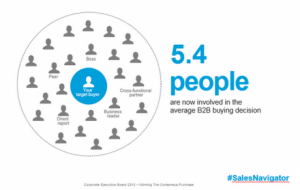The big picture is broken. Sixty-eight percent of businesses admit to working in silos and it’s affecting everybody from the C-Suite down to your front-line IT service desk.
There’s a real, tangible disconnect between the top, bottom, and everything in between epitomized by Enterprise Service Management (ESM). The Transforming the Norm survey revealed that almost half of business leaders don’t understand ESM – a method of working that directly impacts front-line service departments by improving efficiency and collaboration.
Then, there’s the overwhelmed and overworked service desk. In 2008 the ratio of service desk operator to end-user was 1-132 on average, despite the recommended being 1-82. Fast forward ten years and things have worsened to 1-200 (increasing to 1-800 in some organizations), while the ideal has reduced to 1-80.
We’re seeing leaders with ambitious plans, a front-line just trying to get through every day, and the middlemen experiencing pressure from the top and push-back from the bottom. The disconnect is bigger and more impactful than ever before.
But why is there a disconnect and what can we do about it? Discussing a big picture problem such as this can be daunting, so let’s first explore why the disconnect exists by breaking it down into three parts: silos, not considering the starting-line, and a lack of accountability. Then, we’ll focus on what we can do to bridge the gaps.
Working in silos
When we talk of working in silos, it refers to the way an organization operates. Departments and teams are fragments that have broken off from the big picture, working alone and disconnected from the wider goals and ideas of the company.
This broken big picture leads to one major issue: no real connection between where we’re going and where we are right now.
The C-Suite silo is blind to the here and now, instead of focusing on the future. Whereas the front-line is focused solely on the here and now. Their workload is too all-consuming for anything but getting through day-to-day tasks.
So there’s not sole responsibility for this disconnect, it relies on each and every silo.
The start-line is where it begins
The focus of our business leaders tends to be on the milestone, the end goal, the finish line. And that’s what we want, right? Visionary, inspirational leaders to drive our organizations to success.
Well, yes. But what often seems to be ignored is the importance of the start-line and this is where the C-Level silo begins.
To achieve our ambitious goals, we need to understand where we are at today. To ask the question: If we want to reach X in five-years, what do we need to start doing tomorrow to make that happen?
This lack of acknowledgement of the start-line leads the C-Suite to look past the daily struggles of the front-line. Simply turning around to those overwhelmed with their workload and saying ‘here’s some new technology’ does not guarantee success. Before implementing said technology (which may or may not be useful) we need the knowledge and skills to use it, and the teams to set it up and utilize it.
Here lies the disconnect, as our leaders are walking in the dark searching for their next milestone and the front-line are frustrated by an inability to jump over the hurdles right in front of them to be able to reach that finish line.
Embracing accountability
Then comes accountability. We’ve set the goals, now let’s send off the enablers to reach them. It becomes ‘here is everything I want to be done, go and make it happen’ and this doesn’t encourage accountability and responsibility, in fact, it does the opposite.
Those tasked with delivering the goal just do what they’re told. When they encounter a hurdle, they don’t consider the plan and the goal as they don’t feel accountable for either. Instead, they run around the hurdle rather than solving the problem that’s arisen.
When the target is achieved, it has all of these issues behind it which over time will become problems for the organization. Resulting in growth of the disconnect and solidifying silos.
Taking a different approach
Silos, a lack of consideration of the start-line, and no accountability all contribute to this organization-wide disconnect. But we could take a different approach:
- Acknowledging that our organizations are currently made up of broken fragments of a bigger picture. And as these individual pieces, they do not function, they simply exist. We must treat these fragments as what they are (broken pieces) and invest time in gluing them back together. This is the only way that we can really find that bigger picture again.
- Broach a conversation. Instead of focusing only on the future milestones, our business leaders must lead the way in bridging the gap between themselves, the middle, and the bottom. Still pioneering new initiatives, but understanding their journey from today to the end goal and openly communicating with all layers of the business.
- Embrace an ecosystem rather than a hierarchy. Instead of giving orders, the C-Suite should share responsibility. When it comes to any goal, a CIO needs to enable the director of the department(s) involved, who enables specific team managers, who enable the team on the front-line. This way there is open communication, and any hurdles are discussed rather than ignored – resulting in more successful achievements.
IT – Leading the way!
When we consider these ambitious goals that organizations are looking to achieve, we see that many of them come within the realm of digital transformation. The fact that 63% of business leaders say that they are looking to invest in technology and infrastructure proves this point.
This really gives our IT departments the power to lead the way in reconnecting their organization and busting the silos – after all, they are the enablers of digital transformation.
To do this, we must change our image of the company ‘firefighters’ and step-up to show we are the educators. Technology is so often the catalyst for growth and success in businesses, and IT can be the leaders of this by asking themselves the question: What can IT do to help our organization reach its targets?
It’s not bottom-up or top-down, it’s about those specialists in every organization stepping-up and choosing to have a proactive mindset. Not to sit around and wait to be told what to do and when to do it, but to embrace their accountability for the organization’s success.
There will always be the argument of ‘we don’t have enough time’ on the front-line. But guess what, you never will!
Now’s the best time to do it …
There’s never been more of a spotlight on IT, we have the attention that we have been waiting decades for. Not only that but IT budgets are increasing too, for the first time ever without us having to fight for them.
We’ve got all the ingredients and the opportunity in hand to be the enablers for the organization to drive true, valuable change and re-connect the silos that have hindered us thus far.
By acknowledging the broken bigger picture, embracing our responsibility to help achieve company goals, and having the guts to speak up when things aren’t working for us – IT can help to beat the disconnection between the top, bottom, and everything in the middle.
Business & Finance Articles on Business 2 Community
(48)
Report Post






